<< Previous | Displaying results 71-80 of 544 for "world war I" | Next >>
Stretcher bearers carry a wounded soldier during the Battle of the Somme in World War I. France, September 1916. IWM (Q 1332)
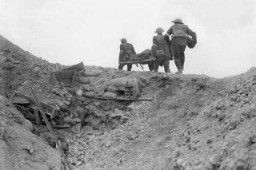
German naval officer Martin Niemöller (top, foreground) commands a U-Boat during World War I. Flensburg, Germany , ca. 1914–17.

Founded by ethnic Turks in 1299, the Ottoman Empire took its name from Osman I, the leader of what was initially a small principality in northwestern Anatolia (Asia Minor). Over the course of the next six centuries, Ottoman rule expanded across much of the Mediterranean Basin. At the height of its power under Suleiman the Magnificent (1494-1566), the Ottoman Empire represented a vast multilingual and multiethnic realm encompassing southeastern Europe, North and East Africa, Western Asia, and the Caucasus.…

Adolf Hitler was determined to overturn the military and territorial provisions of the Treaty of Versailles. Learn more about Nazi German territorial aggression before WWII.
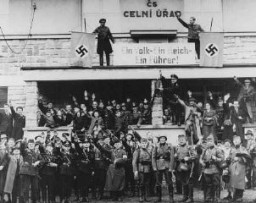
Field Marshal Paul von Hindenburg walks along a flower-covered path on his 70th birthday. On either side, crowds of children cheer. October 2, 1917. Hindenburg will later be elected president of Germany in 1925, during the Weimar Republic. © IWM Q 23976
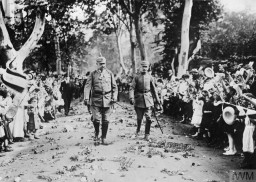
World War I (1914–18) saw the first use of poison gas as a weapon of war. In this oil painting, John Singer Sargent depicted the aftermath of a mustard gas attack on British soldiers during a battle in August 1918. A line of soldiers, with bandaged eyes injured by the gas, hold on to one another as they are led to medical treatment. Around them are rows of other soldiers injured by the effects of the mustard gas, which could cause injuries such as burns and temporary blindness. © IWM (Art.IWM ART…

June 28, 1914. On this date, Archduke Franz Ferdinand was assassinated in Sarajevo, Yugoslavia, precipitating WWI.
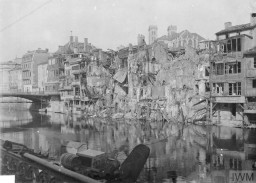
July 1, 1916. On this date, the most causalities in a single day during World War I occurred at the Battle of Somme.

November 3, 1918. On this day, German sailors in Kiel revolt, and protests against World War I spread.
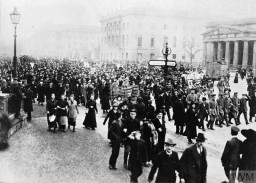
Adolf Hitler, leader of the Nazi Party, aimed to eliminate Europe's Jews and other perceived enemies of Nazi Germany. Learn more.
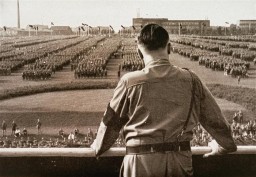
We would like to thank Crown Family Philanthropies, Abe and Ida Cooper Foundation, the Claims Conference, EVZ, and BMF for supporting the ongoing work to create content and resources for the Holocaust Encyclopedia. View the list of donor acknowledgement.